Wedding Rehearsal Tips: Stress-Free Planning for Your Big Day
Planning a wedding involves many details, and one key event is the wedding rehearsal. This practice run helps ensure everything goes smoothly on the big day. Getting the rehearsal right is crucial for a stress-free wedding ceremony.
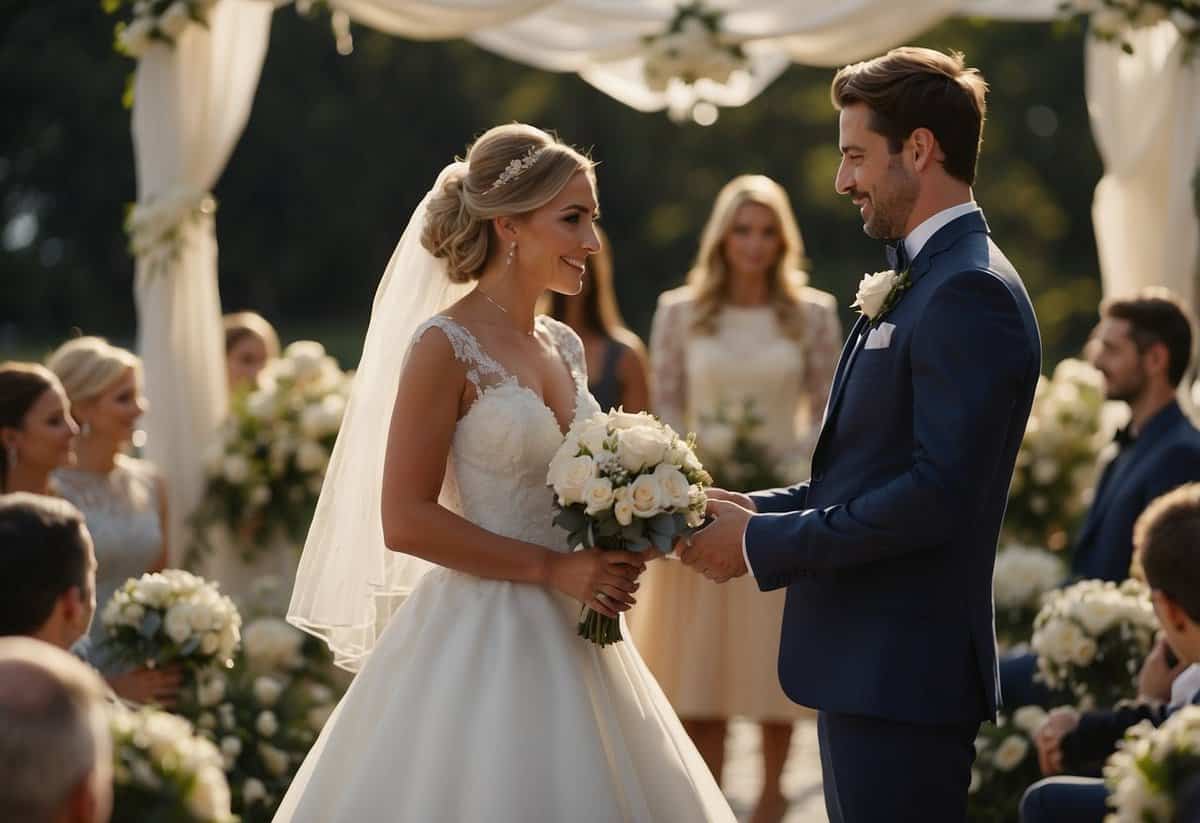
You’ll find that a good rehearsal can ease nerves and set the tone for your wedding. From coordinating the bridal party to confirming the order of events, rehearsals help everyone understand their roles.
1) Create a Timeline

Start by setting a date for your wedding rehearsal. The best time is 1-2 days before the actual wedding.
Coordinate with all key participants. Make sure to confirm attendance with your officiant, wedding planner, and wedding party.
List key activities. Include walkthroughs of the ceremony entrance and exit. Confirm timing and who’s involved in each step.
Allow buffer time. This helps if anything runs longer than planned. It keeps everyone relaxed and prepared for the big day.
2) Assign Roles

Assigning roles is key to a smooth wedding rehearsal. Every family member and friend has a part to play.
Designate tasks early. Give clear instructions. For example, the best man and maid of honor can help guide the wedding party.
Ushers can manage guest seating. Parents can oversee the ring bearer and flower girl.
Communicate each role to avoid confusion. This helps ensure everyone knows what to do on the big day.
3) Brief Your Officiant
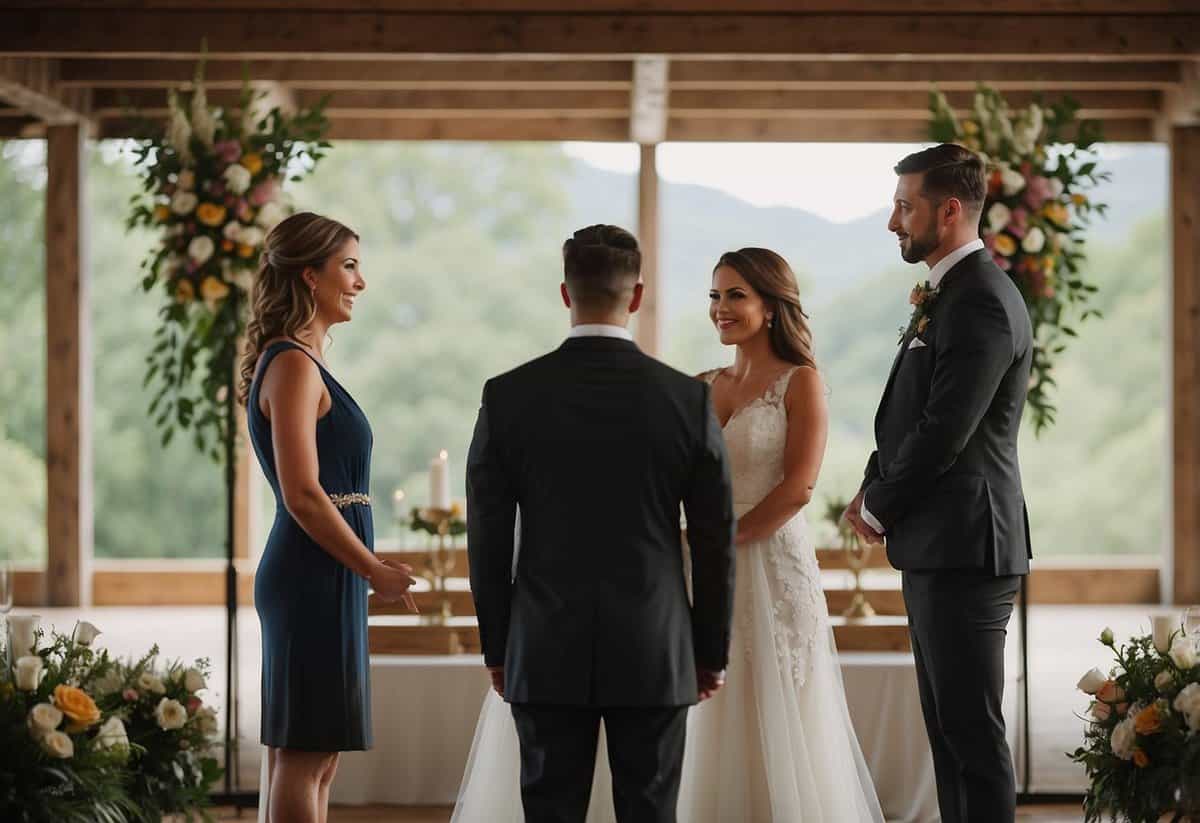
Before the wedding rehearsal, have a chat with your officiant. This helps ensure they know your expectations. Share the order of events and any special elements, like readings or vows.
Discuss the ring exchange. Make sure the officiant knows who will hold the rings and when they’ll need them. This helps the ceremony flow smoothly.
Confirm key details, like the starting time and any personal touches. This helps your officiant lead the rehearsal and ceremony confidently.
4) Run Through Key Moments
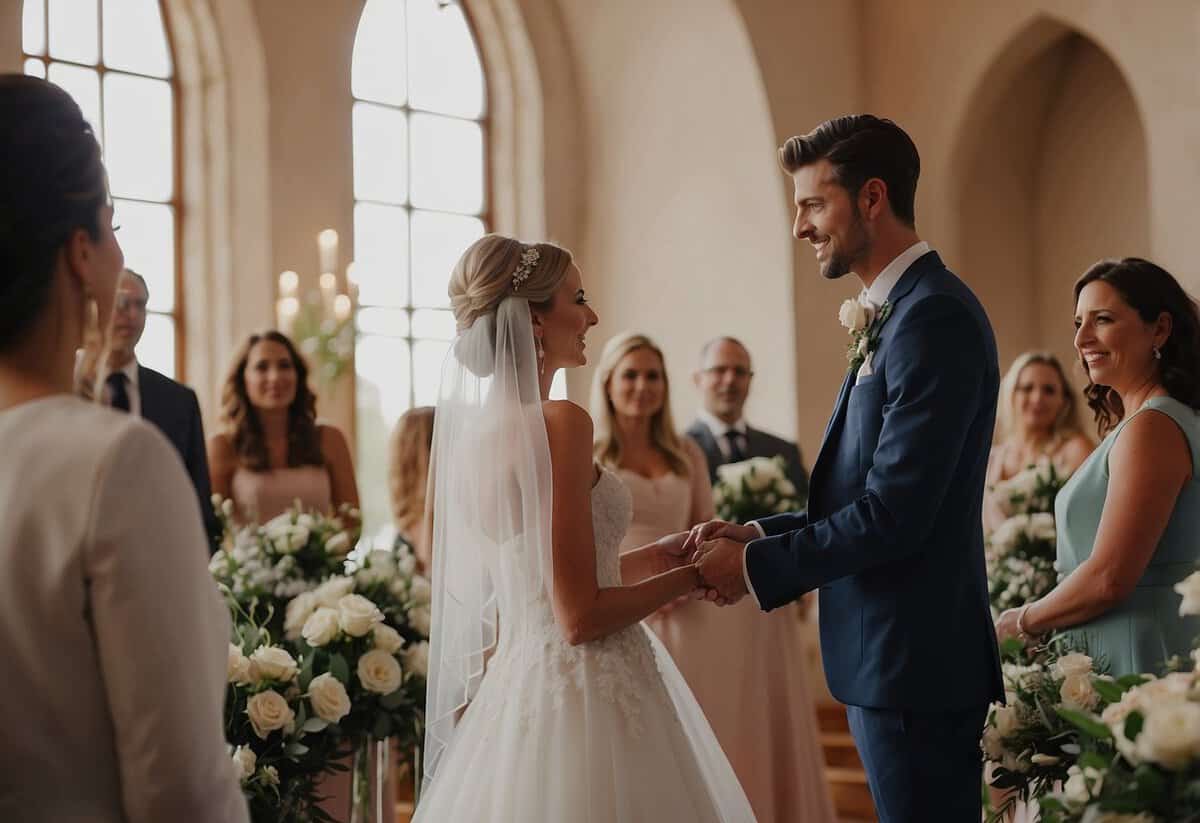
It’s important to walk through the major parts of your ceremony. This helps everyone know their role and tasks.
Start with the entrance. Practice how the wedding party, parents, and officiant will enter. Make sure everyone knows where to stand and walk.
Next, rehearse the main parts of the ceremony. Include vows, ring exchange, and any readings. This makes sure everyone knows when they need to speak or move.
Finish with the exit. Have everyone practice leaving the ceremony space. This way, the end of your ceremony will be smooth and coordinated.
Running through these key moments ensures everyone feels comfortable and prepared for your special day.
5) Practice Walking Down the Aisle
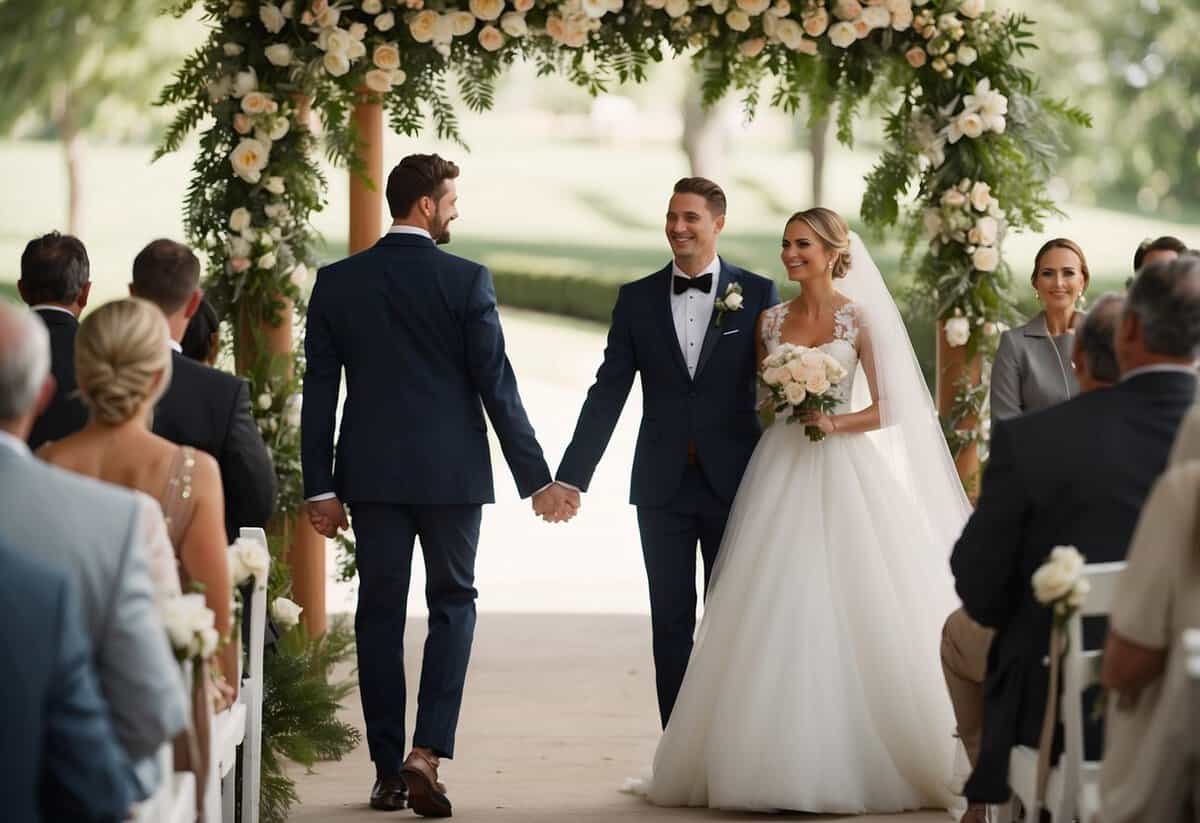
Practice walking down the aisle a few times before the big day. This will help you feel more comfortable and confident. Stand up straight, keep your shoulders back, and relax.
Hold your bouquet a bit lower than you might think. This keeps your posture natural and allows your dress to shine. Try to walk at a steady, even pace.
It’s helpful to practice in your wedding shoes. This way, you can get used to the way they feel and avoid any surprises.
Take deep breaths to stay calm. This is a special moment, so try to enjoy it. Smile and look forward; this will help you feel more at ease.
6) Test Your Music
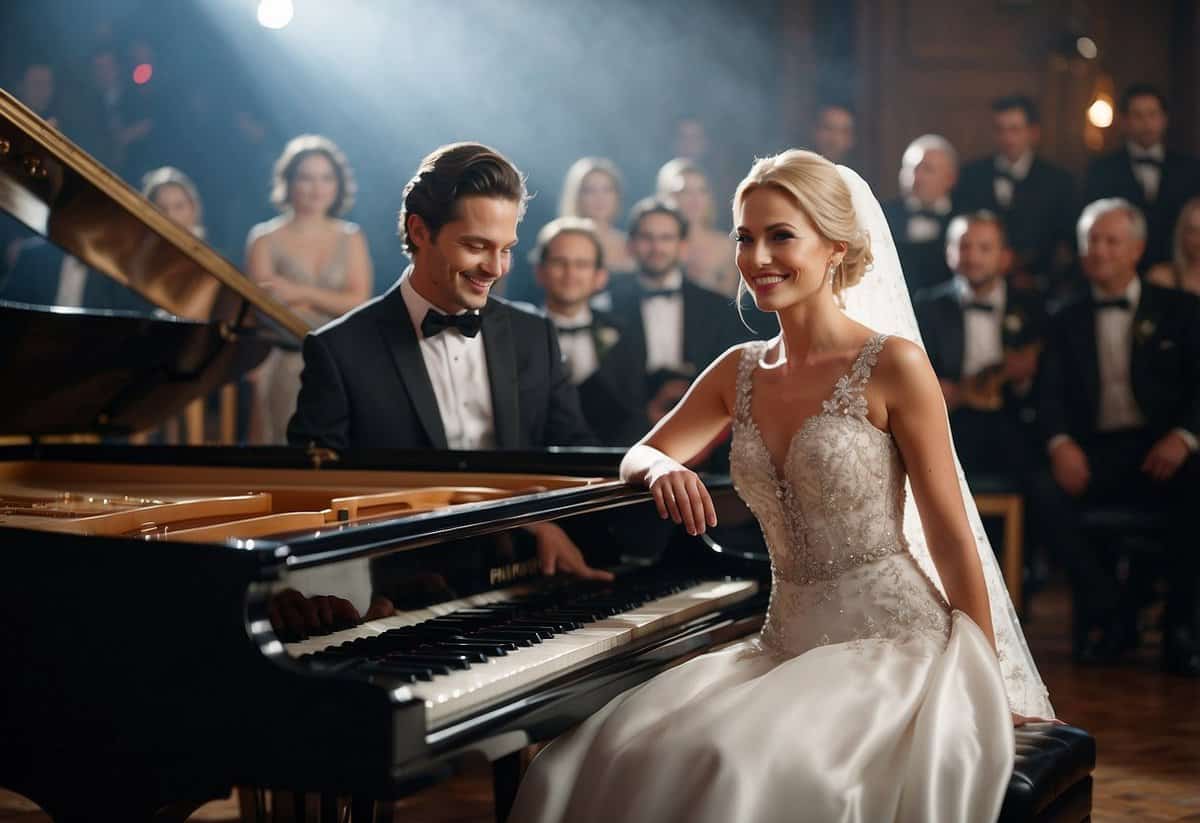
Testing your music is a key part of your wedding rehearsal. Play the songs you have chosen for the ceremony, like the processional and recessional music. This helps everyone know their cues.
Make sure the sound system works well. Check the volume to ensure it’s not too loud or too soft. Ask someone to stand in different parts of the venue to confirm the sound carries well everywhere.
Practice with live musicians if you have them. This ensures they know their cues and any changes to the music. It also gives them a chance to adjust to the venue’s acoustics.
7) Review Ceremony Cues
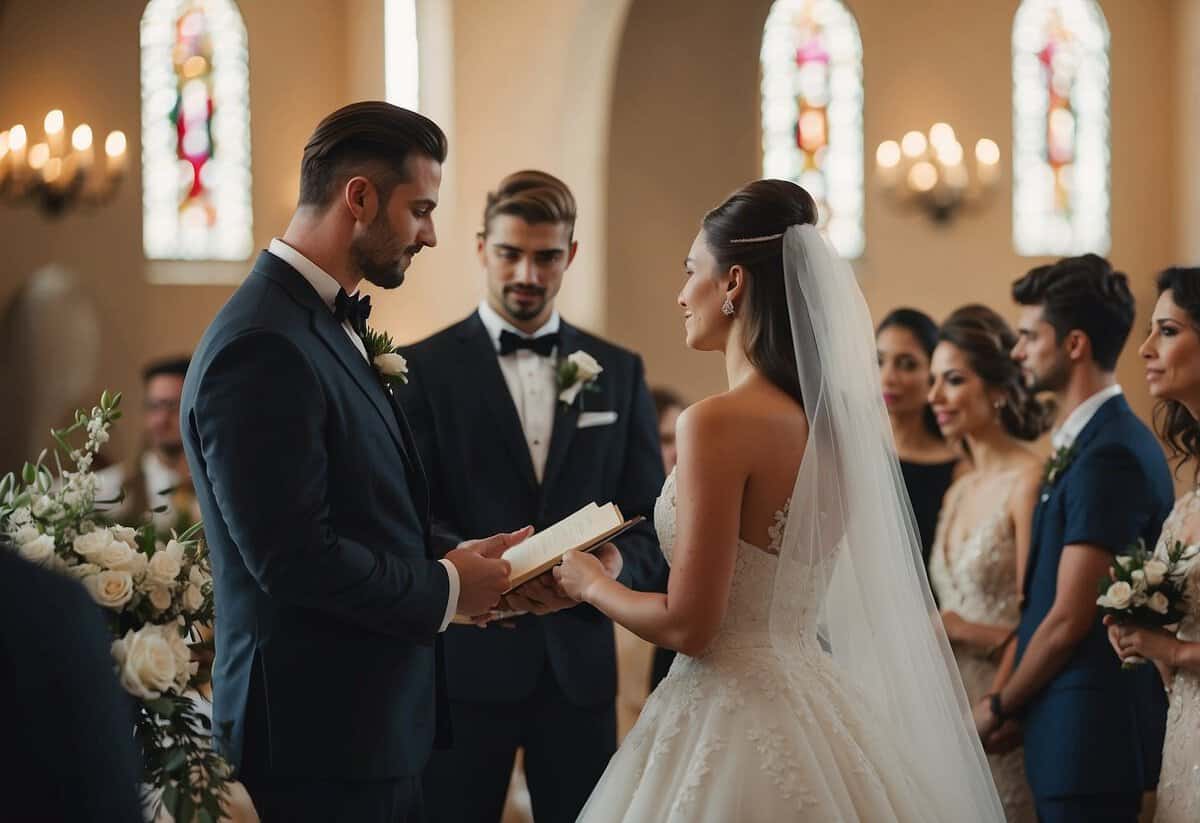
Reviewing ceremony cues is crucial for a smooth wedding rehearsal. Make sure everyone knows where they need to be and when. This includes the processional, vows, ring exchange, and recessional.
Practice the timing of music cues. Make sure the bridal party moves in sync with the music. Practicing helps avoid any awkward pauses or missteps.
Remind all participants of their specific actions. Whether it’s a reading, a song, or a symbolic act, they should be clear on their role. This ensures everyone feels confident and prepared.
8) Confirm Readings and Vows
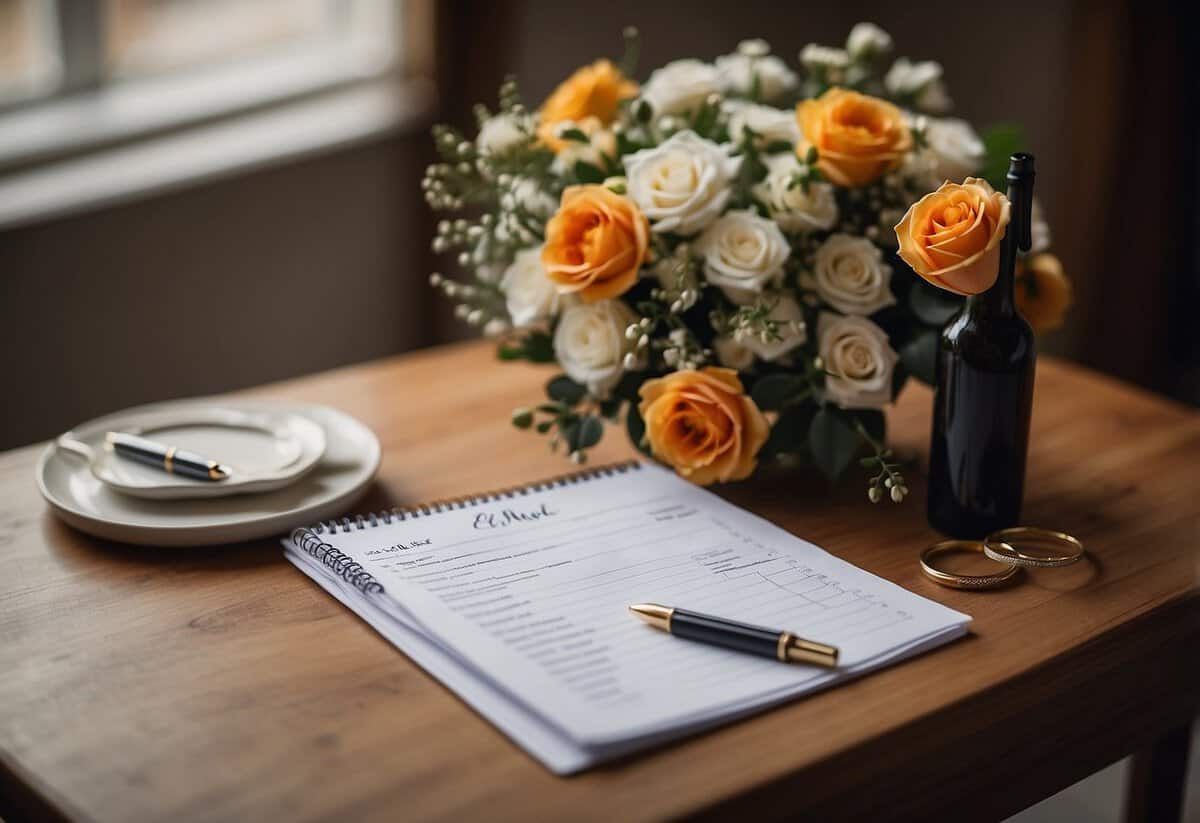
Make sure to double-check the wedding readings and vows. This step is important to ensure everything goes smoothly on your special day.
Talk to the people who will be doing the readings. Confirm that they know their parts and are comfortable with the material.
Read through your vows together. Practice saying them out loud. This helps you feel more confident and prepared.
Review the timing of the readings and vows in the ceremony schedule. This keeps everything on track.
9) Practice Exchanging Rings
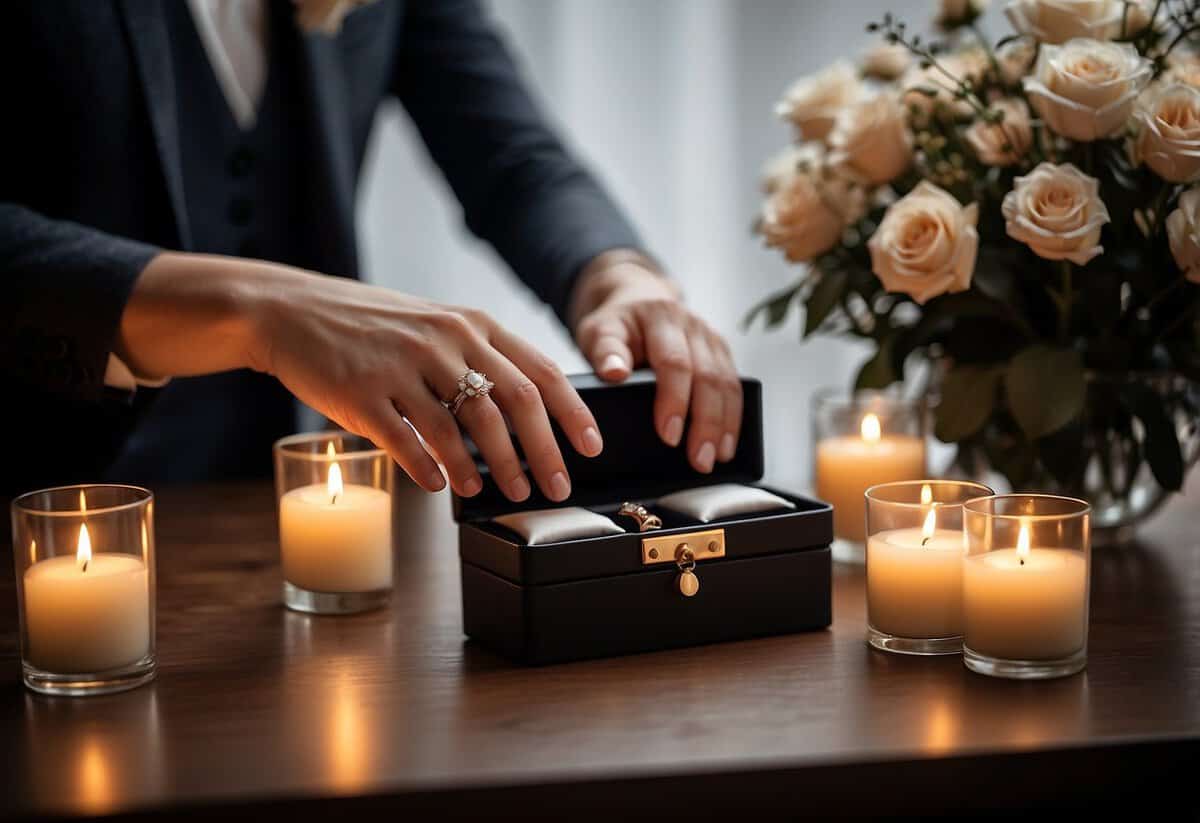
Practicing the exchange of rings is a crucial part of your wedding rehearsal. This moment is one of the most significant in the ceremony.
Make sure you and your partner feel comfortable and relaxed. Hold the rings the correct way to avoid any awkward mishaps.
The officiant will guide you through the sequence. Practice sliding the ring onto your partner’s finger smoothly.
This exercise helps calm nerves and ensures that everything goes off without a hitch on your big day.
10) Walk Through the Exit
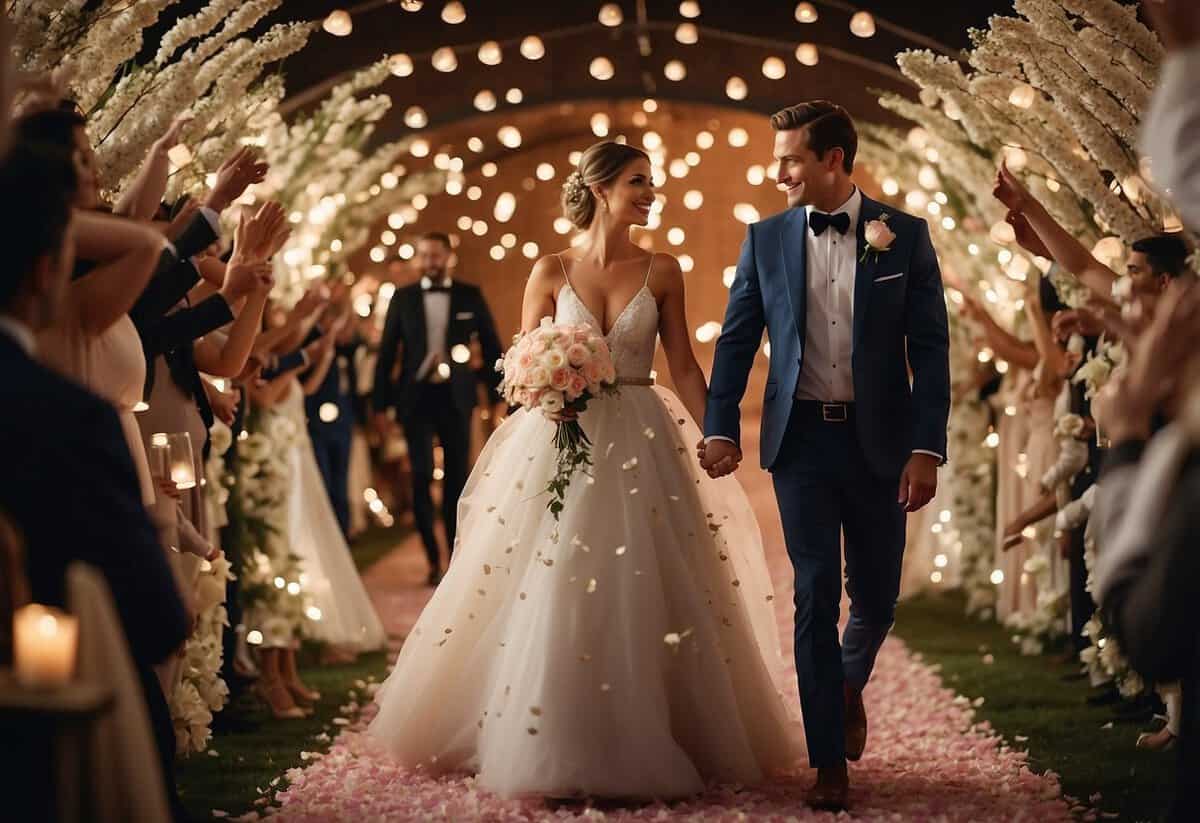
Practice the exit at your wedding rehearsal. This helps everyone know what to do when the ceremony ends. The Bride typically takes her bouquet from the Maid of Honor and exits with the Groom.
The wedding party usually exits in pairs. If you have a Flower Girl and Ring Bearer, they should follow. Then, parents and grandparents exit.
Doing this practice makes sure everyone knows where to go and avoids confusion. It also gives you a chance to see how long the exit will take.
The Importance of a Wedding Rehearsal
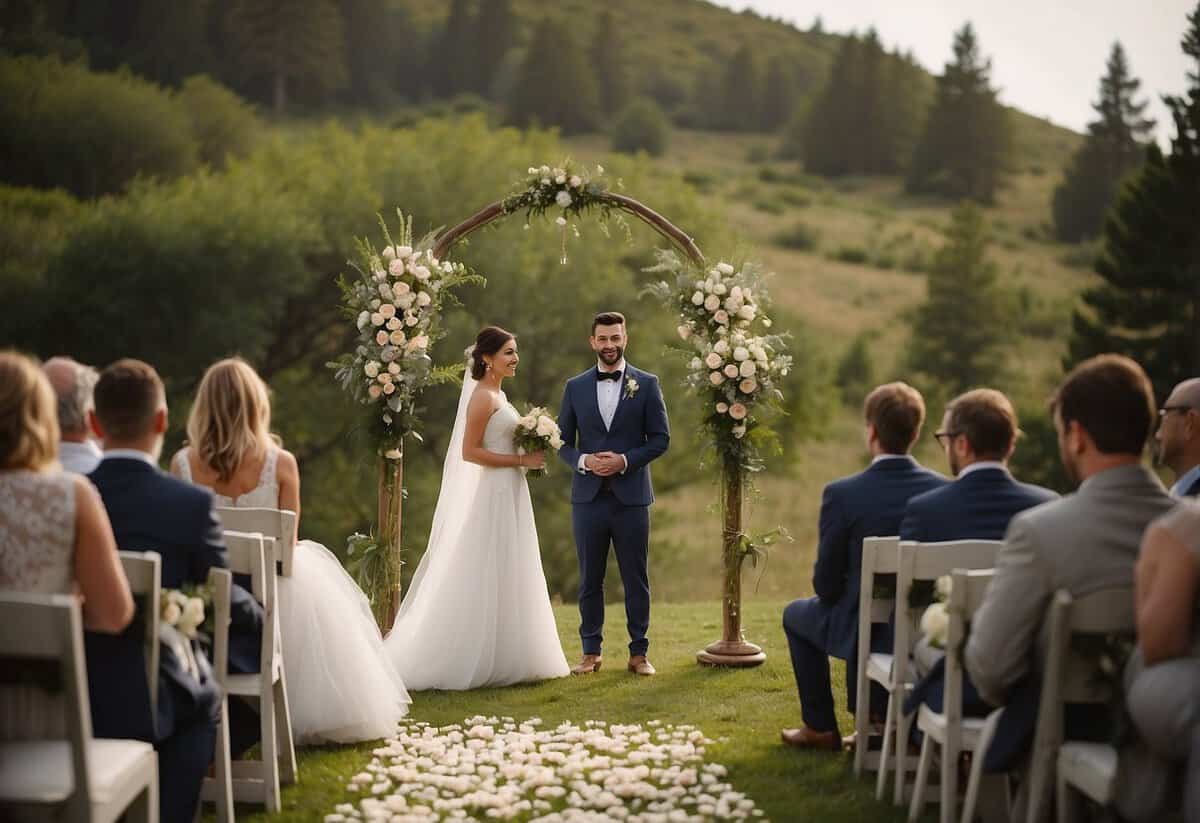
Holding a wedding rehearsal ensures your wedding ceremony runs smoothly and helps reduce anxiety for everyone involved. It allows you to practice and make any necessary adjustments.
Ensuring Smooth Ceremony Flow
A wedding rehearsal provides an opportunity to practice the sequence of events. From the processional to the recessional, each step is crucial. Walking down the aisle, positioning during the ceremony, and timing are practiced to perfection.
Choose the actual ceremony site for the rehearsal, if possible. This familiarizes everyone with the location and layout. Rehearsing at the venue helps the bridal party and family understand where to stand, enter, and exit.
Having a rehearsal ensures everyone knows their role and responsibilities. This includes the officiant, bridal party, and musicians. Confirming the order of events and practicing specific instructions can prevent unexpected hiccups during the ceremony.
Reducing Nerves for the Big Day
A rehearsal helps to ease any pre-ceremony jitters. Practicing the steps reduces anxiety for the couple and participants. Knowing exactly what to do and when can make everyone feel more confident.
Going over the key moments like vows, ring exchange, and first kiss makes everyone comfortable. The familiarity with the sequence can be comforting, helping you focus on the special parts of the day.
Moreover, the rehearsal offers a chance to address any last-minute concerns. Questions about timing, placements, and cues can be resolved. This reassurance ensures everyone is prepared, making the wedding day much more enjoyable and relaxed.
Key Participants to Include
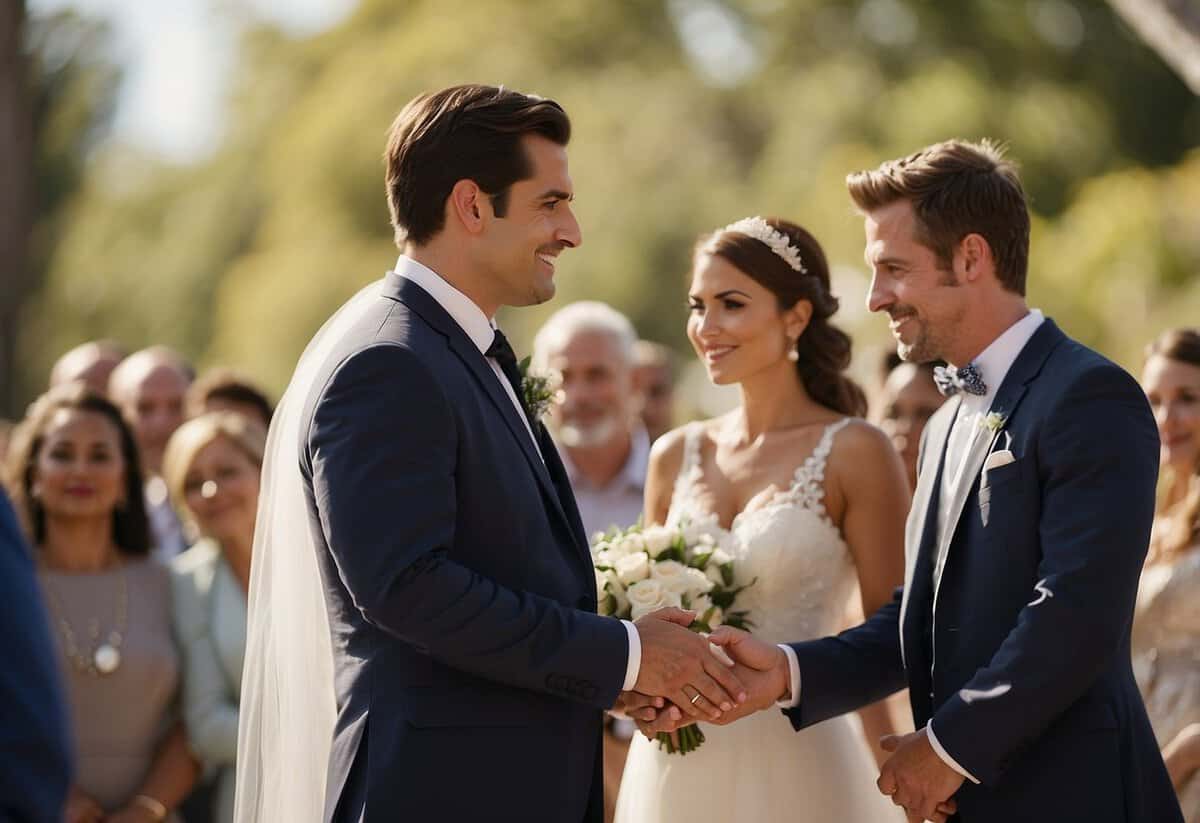
When planning your wedding rehearsal, it’s essential to invite the right people. Focus on those who have key roles during the ceremony and those whose presence is meaningful to you and your partner.
Wedding Party Roles
The wedding party includes the essential members like bridesmaids, groomsmen, the maid of honor, and the best man. These people will have distinct roles on the big day, like walking down the aisle or holding the rings, so they need to know exactly what to do.
Officiant: The person who will lead the ceremony should definitely be at the rehearsal. They will guide the timing and order of events.
Musicians and Readers: If you have special music or readings, those participants need to practice to ensure everything flows smoothly.
Family and Special Guests
Your close family members, like parents and grandparents, play important roles and should be involved. They might walk you down the aisle or be part of special traditions like lighting a unity candle.
Out-of-town visitors: If you have family or friends coming from far away, include them. It makes them feel welcome and gives them a chance to understand their roles.
Special Arrangements: If any guests have specific needs, invite them so they can practice entering and exiting the venue comfortably. This ensures everyone enjoys the ceremony without stress or confusion.








